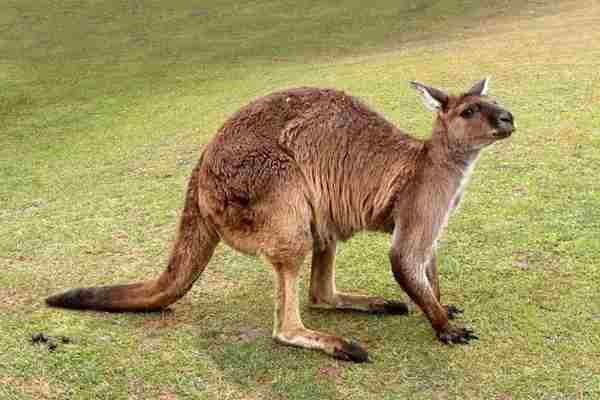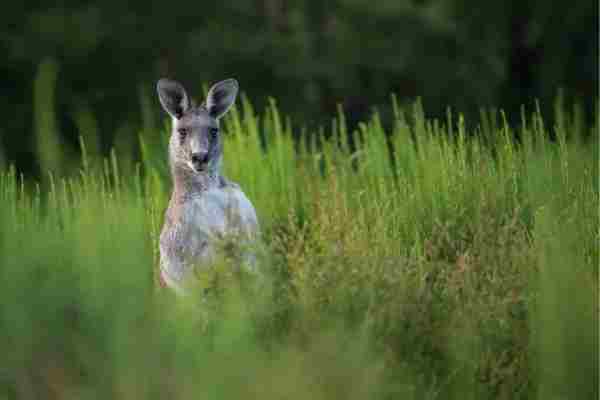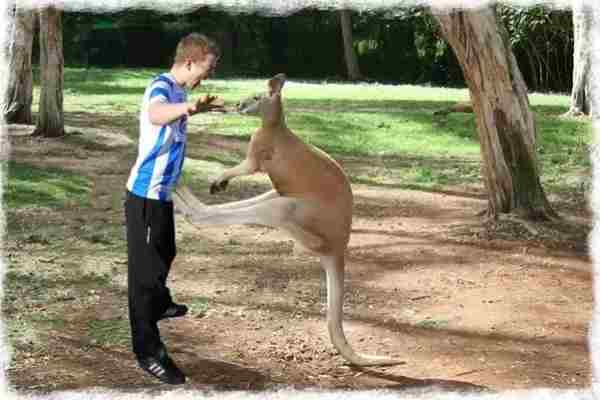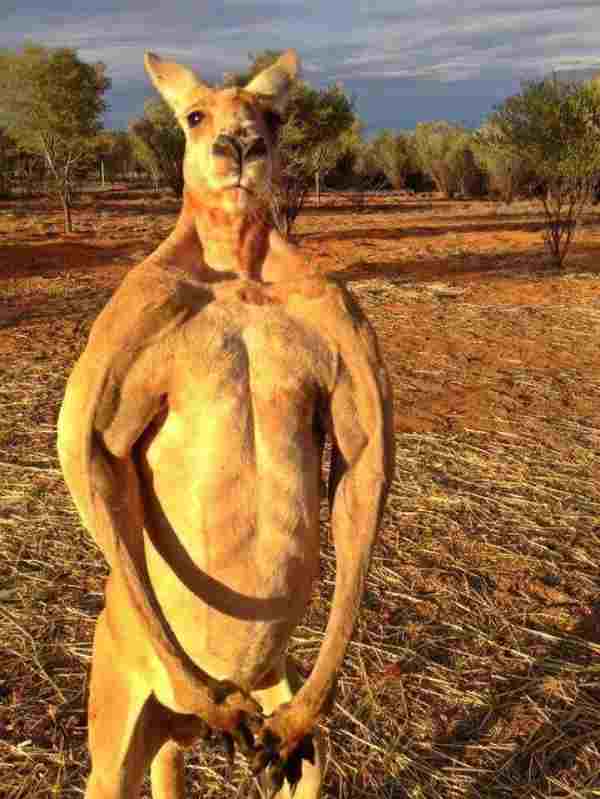Kangaroos are fascinating creatures with incredible athletic abilities. Their agility and power as they jump across the vast Australian plains certainly leave a lasting impression on anyone who witnesses it! However, despite their incredible leaps and bounds, many people have wondered if kangaroos can walk in reverse.
Table of Contents
Unfortunately, the answer is no. Due to their large feet and long tails, kangaroos simply cannot manoeuvre in a backwards direction. Additionally, their inability to move each leg independently makes it even more difficult for them to travel backwards.
Why Can’t Kangaroos Walk Backwards?

Kangaroos are truly remarkable creatures, having evolved a unique set of anatomical features that enable them to hop incredible distances. Their powerful hind legs and tails are perhaps their most distinguishing traits, allowing them to traverse vast territories with ease. However, these impressive features also come with some challenges.
Kangaroos are not able to move their hind legs independently, meaning that they have to pivot their entire body around in order to change direction. Their tails, which are incredibly useful for balance and propulsion when hopping forward, can make it difficult for them to move backwards.
Lastly, the Z-shaped structure of their back legs is exclusively designed for forward hopping, making it virtually impossible for them to walk backwards with any degree of ease.
While the kangaroo’s feet and tail are crucial for generating forward momentum, they are not as effective at supporting the backward motion. As such, kangaroos are not well-suited for walking or hopping backwards due to the limitations of their body structure.
Can Kangaroos Walk Normally?
Although hopping on their hind legs is the most common way for kangaroos to move, they are also capable of a specific crawl-walking motion. This method, while not as flashy as hopping, is useful for kangaroos when they need to move slowly or graze in grasslands.
When using the crawl-walking motion, kangaroos adopt a tripod posture, using their front legs to lean on the ground while their tail supports their weight, forming a stable base for movement. To move forward, they swing their hind legs forward in a slow and steady manner.
However, it’s important to note that this form of movement is not considered the same as normal walking. Kangaroos’ feet and tails are simply too specialized for hopping, which remains their primary mode of locomotion.

Why Do Kangaroos Hop Instead of Walk?
Australia’s marsupial icon – the kangaroo – has certainly made an evolutionary leap that separates it from other mammals. Their unique way of getting around – by hopping – is what sets them apart. It’s interesting to note that the reason kangaroos hop instead of walk lies in their evolution.
Their ancestors, which looked like today’s opossums, used to live amongst the treetops in Australia. While this was perfect for tree climbing, their legs weren’t adapted for ground walking. As a result, they developed hopping as their primary means of getting around.
This eventually evolved over time into the bouncing kangaroo we know today. It may seem like a huge drain of energy, but hopping is incredibly energy efficient. This means that kangaroos can effortlessly cover long distances in search of food. So, evolution has made the hopping of the kangaroo an incredibly efficient and effective mode of movement.
Can Kangaroos Run?

Have you ever seen a kangaroo hopping gracefully through the fields? The way they move is simply astonishing, and it’s not just because they’re cute and cuddly. Kangaroos are some of the best jumpers in the animal kingdom, able to reach speeds of up to 44 mph. But what makes them such great leapers?
Well, it turns out that more than half of their total weight is comprised of muscles that are located around their pelvis and hind legs. This makes their hind legs incredibly strong, allowing them to hop for long distances without expending too much energy. So, the next time you spot a kangaroo bouncing through the wild, you’ll know that it’s all thanks to its impressive genetics.
What Are Some Other Animals That Can’t Walk Backwards?
There are some animals, apart from kangaroos, that cannot walk backwards due to various reasons.
- Emus, are birds that are unable to walk backwards due to their knee joints. Emus are known for their rapid running speed, but their anatomical structure makes it impossible for them to walk in reverse.
- Penguins are also animals that cannot walk backwards or forward. They move using a waddle, which is their unique way of locomotion. Although they cannot technically walk, they can waddle backwards.
- Alligators are also creatures that have limitations when it comes to moving in reverse. They move through two primary methods, the “belly-crawling” and “high walk.” While an alligator can walk backwards in the high walk position, it cannot do so when its body is touching the ground during belly-crawling.
FAQs
Can sheep walk backwards?
Unlike humans, who step backwards by shifting their weight onto their toes, sheep must change the way they move their legs entirely. But with their nimble hooves and flexible joints, these fluffy creatures have no trouble reversing their steps.
Which animal can not walk backwards?
Kangaroos
In what direction can’t a kangaroo move?
Backwards
Do any animals walk backwards?
Most animals have the capability to walk in reverse, even if it’s not a common occurrence. This skill assists animals in escaping from confined spaces and keeps them safe when they sense danger.
Final Words
Kangaroos are fascinating animals, known for their signature hopping motion, powerful legs, and distinctive features like their large feet and long tails. What many people may not realize, however, is that kangaroos are also incapable of walking or jumping backwards due to their unique anatomy.
This is due to their inability to move each leg independently, which makes it difficult for them to change direction or move in reverse. While this might seem like a hindrance, kangaroos have actually adapted their movement style to their environment and are able to crawl-walk on all four limbs when necessary.
Reference:
- https://www.saczoo.org/2022/02/you-asked-we-answered-red-kangaroos/
- https://www.australia.com/en/things-to-do/wildlife/kangaroo-interesting-facts.html
- https://www.abc.net.au/science/articles/2005/12/05/1515850.htm

Zahra Makda
Growing up enjoying the beauty of my village, a good passion for nature developed in me from childhood. Following my passion for the natural world, I have chosen zoology for my graduation, during my undergraduate degree, I participated in many nature trails, bird watching, rescues, training for wildlife conservation, workshop, and seminars on biodiversity. I have a keen interest in invertebrate biology, herpetology, and ornithology. Primary interests include studies on taxonomy, ecology, habitat and behavior.









